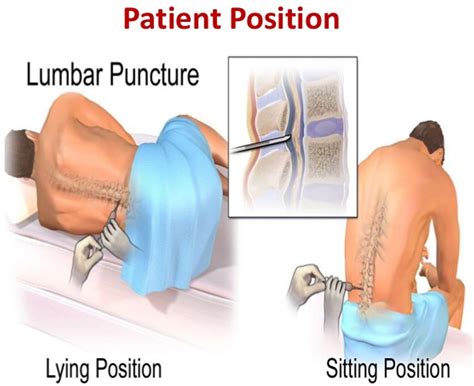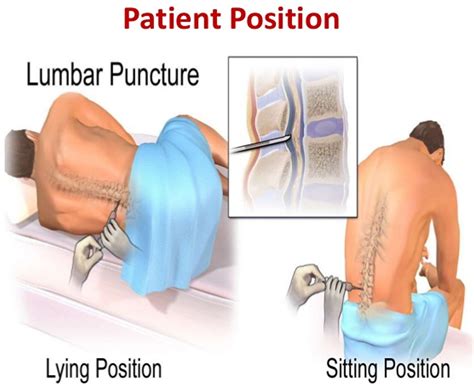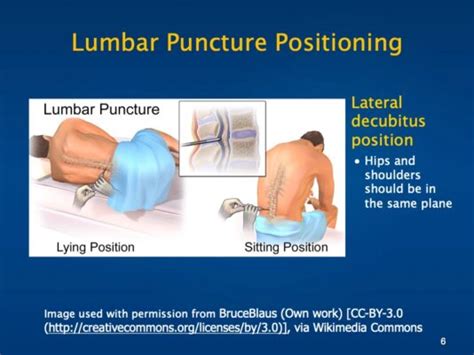Intro
Discover the Lumbar Puncture Procedure, a diagnostic test using spinal tap, cerebrospinal fluid analysis, and medical imaging to diagnose neurological disorders, meningitis, and spinal issues with precision and accuracy.
The lumbar puncture procedure, also known as a spinal tap, is a medical intervention that involves collecting a sample of cerebrospinal fluid (CSF) from the lumbar region of the spine. This procedure is performed to diagnose and monitor various neurological conditions, such as meningitis, multiple sclerosis, and Guillain-Barré syndrome. The lumbar puncture procedure is a relatively safe and straightforward intervention, but it requires careful preparation and execution to minimize the risk of complications.
The importance of the lumbar puncture procedure cannot be overstated, as it provides valuable diagnostic information that can help healthcare professionals develop effective treatment plans for patients with neurological conditions. Furthermore, the procedure can also be used to administer medications, such as antibiotics or chemotherapy, directly into the spinal canal. Despite its many benefits, the lumbar puncture procedure can be intimidating for patients who are unfamiliar with the process. Therefore, it is essential to educate patients about the procedure, its benefits, and its potential risks to ensure that they are well-informed and prepared.
In recent years, the lumbar puncture procedure has undergone significant advancements, with the development of new techniques and technologies aimed at improving patient safety and comfort. For example, the use of ultrasound guidance has become increasingly popular, as it allows healthcare professionals to visualize the spinal anatomy and accurately locate the optimal puncture site. Additionally, the development of smaller and more flexible needles has reduced the risk of complications and improved patient comfort during the procedure.
Lumbar Puncture Procedure Overview

Benefits of Lumbar Puncture Procedure
The lumbar puncture procedure offers several benefits, including: * Diagnostic accuracy: The procedure provides a reliable and accurate diagnosis of various neurological conditions, such as meningitis, multiple sclerosis, and Guillain-Barré syndrome. * Therapeutic benefits: The procedure can be used to administer medications, such as antibiotics or chemotherapy, directly into the spinal canal. * Minimal risk: The procedure is relatively safe, with a low risk of complications, such as infection, bleeding, or nerve damage. * Quick recovery: The procedure is typically performed on an outpatient basis, and patients can usually resume their normal activities within a few hours.Risks and Complications of Lumbar Puncture Procedure

Preparation for Lumbar Puncture Procedure
To prepare for the lumbar puncture procedure, patients should: * Avoid eating or drinking for at least 2 hours before the procedure * Avoid taking any medications that may increase the risk of bleeding, such as aspirin or warfarin * Inform their healthcare professional about any medical conditions, such as a history of bleeding disorders or spinal surgery * Wear comfortable clothing and avoid wearing any jewelry or metal objects that may interfere with the procedureWhat to Expect During the Lumbar Puncture Procedure

After the Lumbar Puncture Procedure
After the lumbar puncture procedure, patients should: * Lie flat on their back for at least 1 hour to reduce the risk of headache * Avoid bending, lifting, or strenuous activities for at least 24 hours * Avoid drinking caffeine or other stimulants for at least 24 hours * Monitor their temperature and watch for signs of infection, such as fever, chills, or redness at the puncture siteLumbar Puncture Procedure Techniques

Lumbar Puncture Procedure Equipment
The lumbar puncture procedure requires several pieces of equipment, including: * Needle: A sterile, disposable needle is used to puncture the spinal canal and collect the CSF sample. * Syringe: A sterile, disposable syringe is used to collect the CSF sample. * Local anesthetic: A local anesthetic, such as lidocaine, is used to numb the skin and reduce discomfort during the procedure. * Antiseptic solution: An antiseptic solution, such as povidone-iodine, is used to clean and disinfect the skin.Lumbar Puncture Procedure Training

Lumbar Puncture Procedure Certification
Healthcare professionals who perform the lumbar puncture procedure should be certified by a reputable organization, such as the American Board of Medical Specialties (ABMS). This certification ensures that healthcare professionals have the necessary knowledge, skills, and training to perform the lumbar puncture procedure safely and effectively.What is the purpose of the lumbar puncture procedure?
+The purpose of the lumbar puncture procedure is to collect a sample of cerebrospinal fluid (CSF) from the lumbar region of the spine to diagnose and monitor various neurological conditions.
What are the risks and complications of the lumbar puncture procedure?
+The risks and complications of the lumbar puncture procedure include headache, infection, bleeding, and nerve damage.
How is the lumbar puncture procedure performed?
+The lumbar puncture procedure is performed by inserting a needle into the spinal canal, usually between the third and fourth lumbar vertebrae, to collect a sample of CSF.
What should I expect during the lumbar puncture procedure?
+During the lumbar puncture procedure, you can expect to lie on your side with your knees drawn up to your chest, feel a pinch or stinging sensation when the local anesthetic is administered, and feel some pressure or discomfort when the needle is inserted into the spinal canal.
How long does the lumbar puncture procedure take?
+The lumbar puncture procedure typically takes 10-30 minutes to complete.
In conclusion, the lumbar puncture procedure is a valuable diagnostic and therapeutic tool that provides important information about various neurological conditions. While the procedure is generally safe, it requires careful preparation and execution to minimize the risk of complications. By understanding the benefits, risks, and techniques of the lumbar puncture procedure, healthcare professionals can provide high-quality care to patients and improve outcomes. We invite you to share your thoughts and experiences with the lumbar puncture procedure in the comments below. If you have any questions or concerns, please do not hesitate to ask. Thank you for reading, and we look forward to your feedback!
